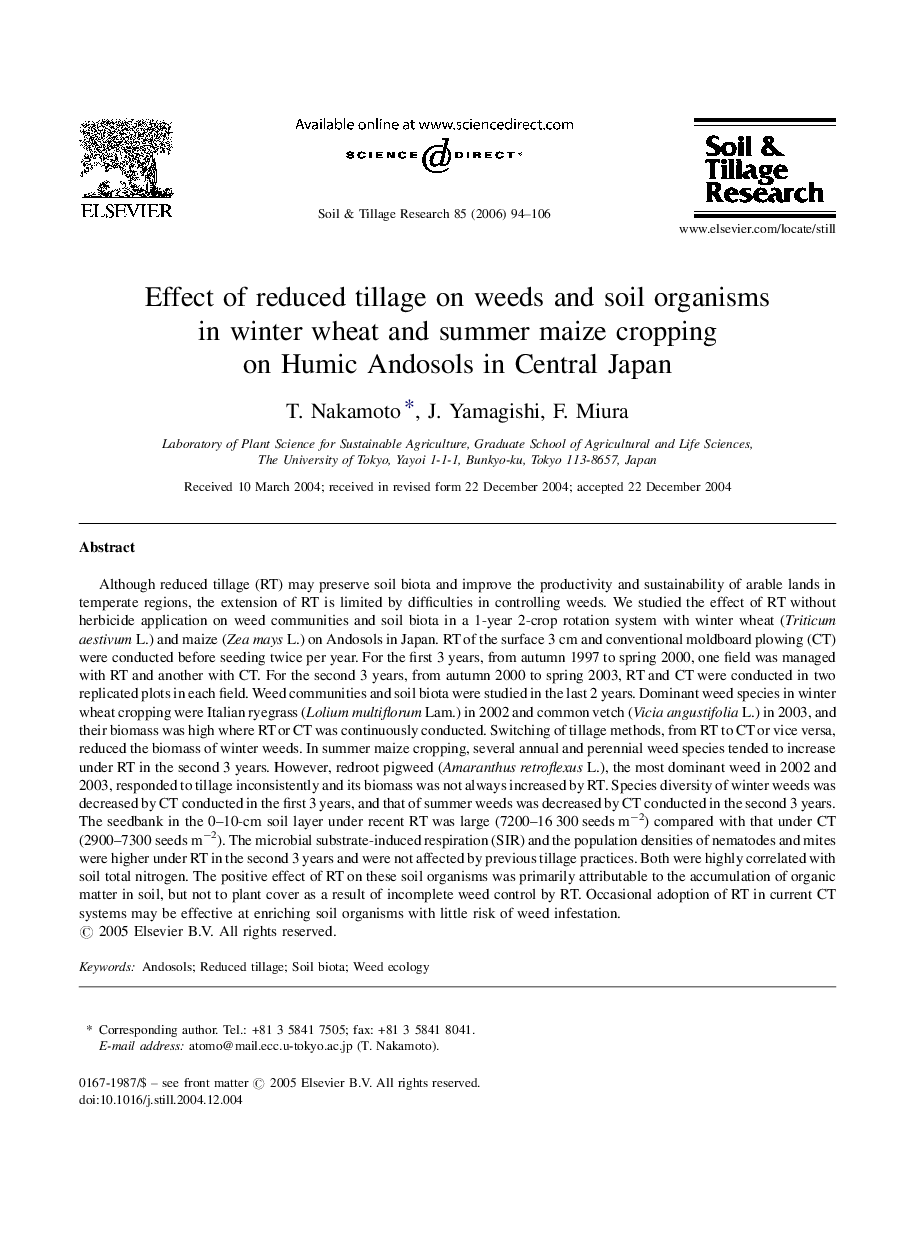| Article ID | Journal | Published Year | Pages | File Type |
|---|---|---|---|---|
| 306927 | Soil and Tillage Research | 2006 | 13 Pages |
Although reduced tillage (RT) may preserve soil biota and improve the productivity and sustainability of arable lands in temperate regions, the extension of RT is limited by difficulties in controlling weeds. We studied the effect of RT without herbicide application on weed communities and soil biota in a 1-year 2-crop rotation system with winter wheat (Triticum aestivum L.) and maize (Zea mays L.) on Andosols in Japan. RT of the surface 3 cm and conventional moldboard plowing (CT) were conducted before seeding twice per year. For the first 3 years, from autumn 1997 to spring 2000, one field was managed with RT and another with CT. For the second 3 years, from autumn 2000 to spring 2003, RT and CT were conducted in two replicated plots in each field. Weed communities and soil biota were studied in the last 2 years. Dominant weed species in winter wheat cropping were Italian ryegrass (Lolium multiflorum Lam.) in 2002 and common vetch (Vicia angustifolia L.) in 2003, and their biomass was high where RT or CT was continuously conducted. Switching of tillage methods, from RT to CT or vice versa, reduced the biomass of winter weeds. In summer maize cropping, several annual and perennial weed species tended to increase under RT in the second 3 years. However, redroot pigweed (Amaranthus retroflexus L.), the most dominant weed in 2002 and 2003, responded to tillage inconsistently and its biomass was not always increased by RT. Species diversity of winter weeds was decreased by CT conducted in the first 3 years, and that of summer weeds was decreased by CT conducted in the second 3 years. The seedbank in the 0–10-cm soil layer under recent RT was large (7200–16 300 seeds m−2) compared with that under CT (2900–7300 seeds m−2). The microbial substrate-induced respiration (SIR) and the population densities of nematodes and mites were higher under RT in the second 3 years and were not affected by previous tillage practices. Both were highly correlated with soil total nitrogen. The positive effect of RT on these soil organisms was primarily attributable to the accumulation of organic matter in soil, but not to plant cover as a result of incomplete weed control by RT. Occasional adoption of RT in current CT systems may be effective at enriching soil organisms with little risk of weed infestation.
